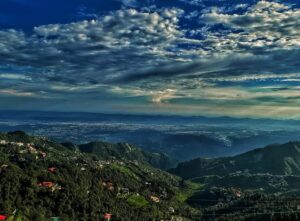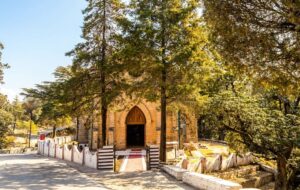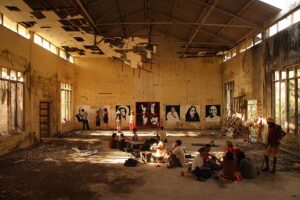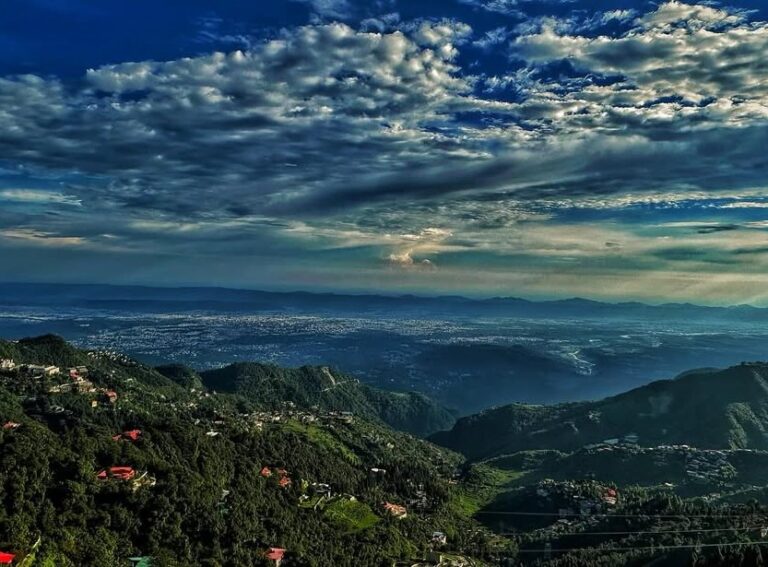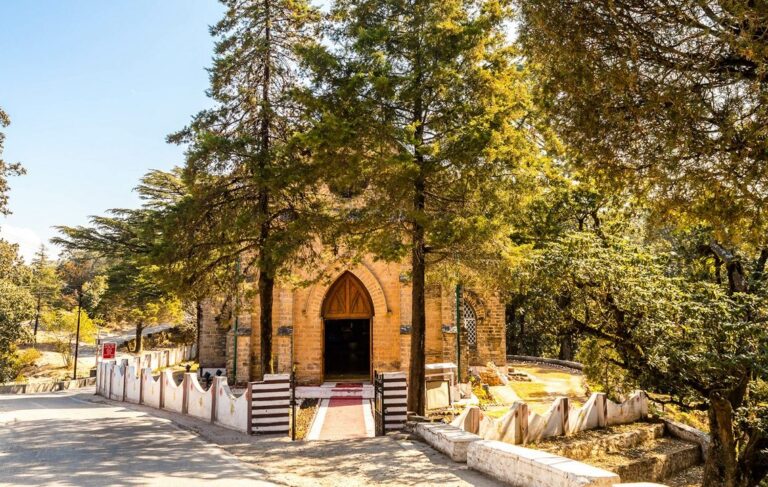Discover Mahabodhi Temple Bihar | Opening Time | How to Reach There
The Mahabodhi Temple Bihar (literally meaning “Great Awakening Temple”) is an ancient Buddhist temple located in Bodh Gaya, recognized as a UNESCO World Heritage Site. This sacred site marks the place where Buddha is believed to have attained Enlightenment under the Bodhi Tree.
Bodhi Tree Bodhgaya
Architecturally stunning, the temple stands east of the Mahabodhi Tree. Its design features a cylindrical pyramid shape, with a basement of 48 square feet that rises to a total height of 170 feet. The temple’s upper section includes Chatras (umbrellas), symbolizing the sovereignty of religion. The intricate architecture and historical significance make the Mahabodhi Temple one of the most revered Buddhist pilgrimage destinations worldwide.
Mahabodhi Temple Complex Bihar
The Mahabodhi Temple Bihar Complex at Bodh Gaya is one of the most significant Buddhist pilgrimage sites in the world, closely associated with the life of Lord Buddha and his attainment of Enlightenment. Built initially by Emperor Ashoka in the 3rd century B.C., the current temple dates from the 5th–6th centuries and stands as one of the earliest Buddhist temples made entirely of brick, still preserved from the late Gupta period.
Suggested Read: Varanasi to Bodhgaya Distance Time and Tips
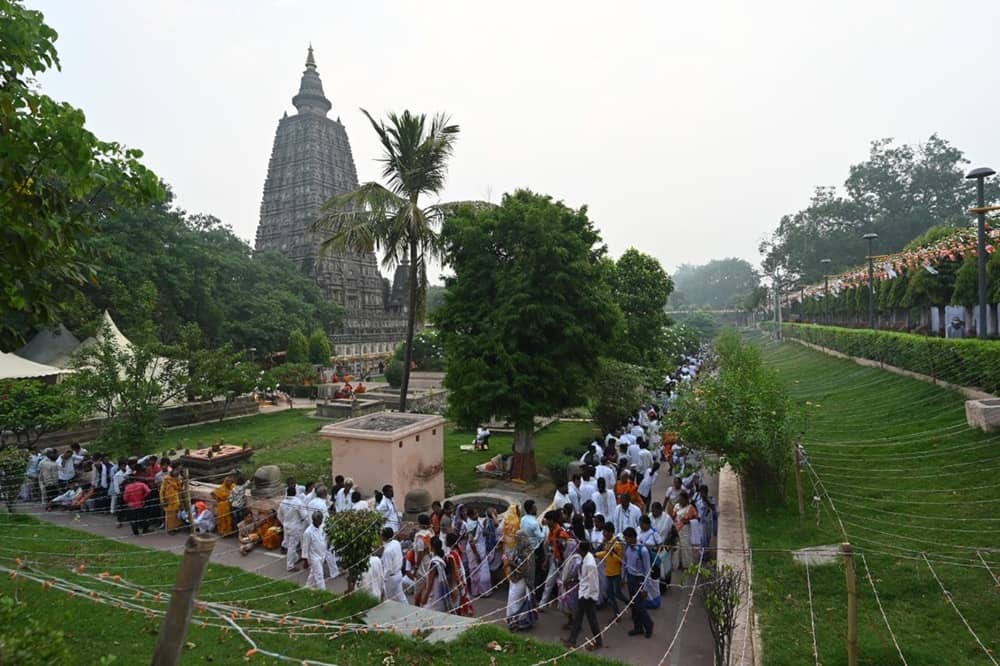
Location: Mahabodhi Temple Bihar
Mahabodhi Temple Bihar is 115 km south of Patna, the state capital of Bihar, and 16 km from Gaya, the Mahabodhi Temple Complex covers an area of 4.86 hectares and contains some of the greatest remnants of early Buddhist architecture. The temple itself is 50 meters tall, featuring the Vajrasana (the Diamond Throne), the sacred Bodhi Tree, and six other significant sites connected to Buddha’s Enlightenment. The complex is surrounded by numerous ancient Votive stupas and secured by inner, middle, and outer boundaries.
Mahabodhi Temple Opening Time
- 05:00 AM: The temple is open all days throughout the week.
- Opening of the Mahabodhi Mahavihara (main shrine)
- 05:30 AM to 06:00 AM: Sutta chanting and meditation
- 10:00 AM: Offering of Kheer (rice pudding cooked with rice, milk, and sugar)
- 06:00 PM to 06:30 PM : Sutta chanting (Mahayana tradition)
- 06:30 PM to 07:00 PM : Sutta chanting (Pali)
- 09:00 PM : Closing of the Mahabodhi Mahavihara
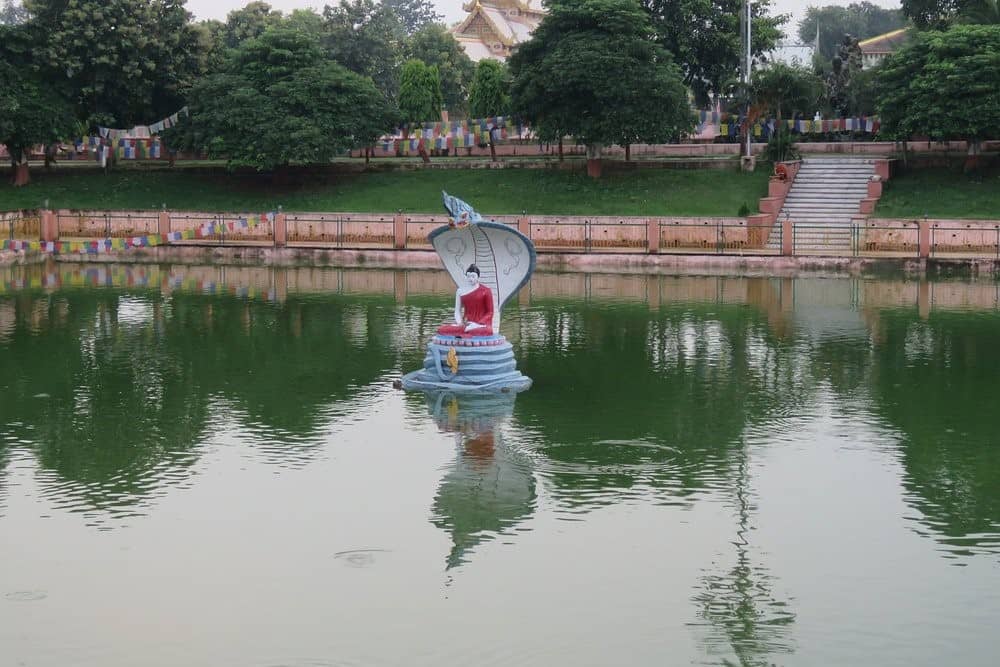
Lotus Pond ( Muchalinda Lake )
The Lotus Pond, located to the south of the temple, adds to the spiritual significance of the area, and both the temple and pond are surrounded by multi-level circumambulatory paths. The Main Temple wall stands at an average height of 11 meters and is built in classical Indian temple architecture, featuring Buddha statues, intricate chaitya niches, and a towering shikhara crowned with traditional Indian architectural elements such as the amalaka and kalasha.
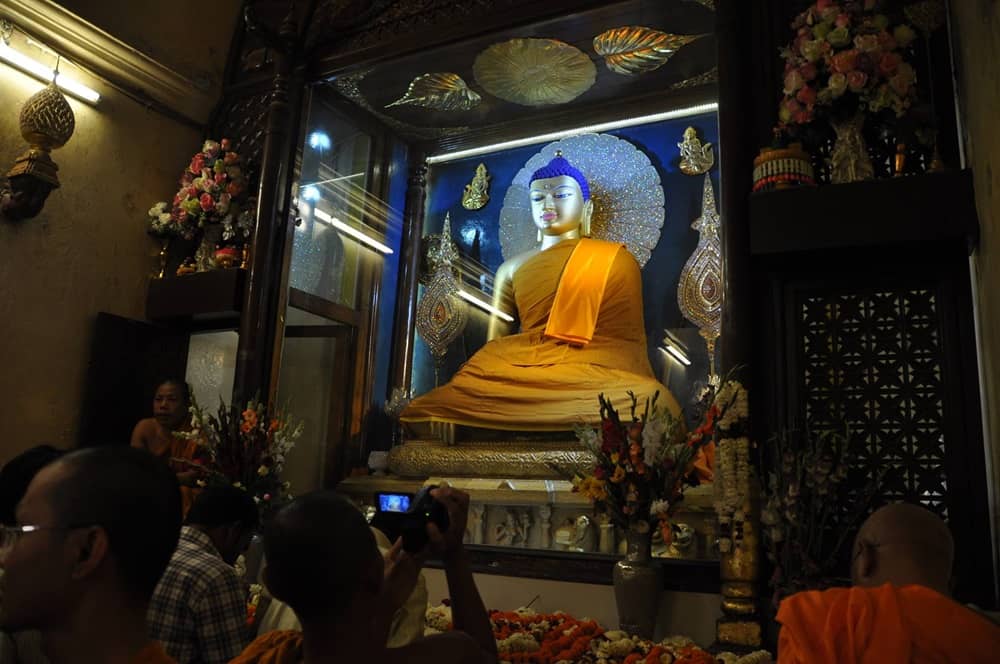
Mahabodhi Temple Buddha Statue
The temple’s sanctum holds a gilded seated Buddha statue over 5 feet tall, representing Buddha’s moment of Enlightenment. The upper level of the temple contains a shrine where senior monks gather for meditation, adding to the site’s ongoing spiritual significance.
The Mahabodhi Temple Bihar Complex remains a critical site for understanding the evolution of Buddhist worship, from Emperor Ashoka’s time to the present day, while also influencing brick architecture across the centuries.
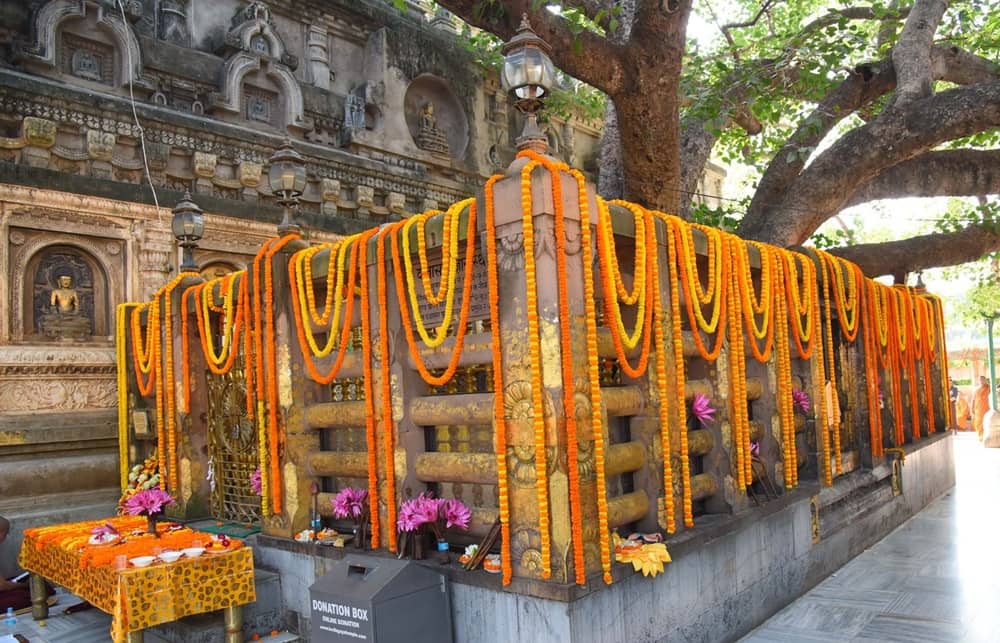
Bodhi Tree Bodhgaya
The Bodhi tree, according to Buddhist tradition, is the sacred fig tree (Ficus religiosa) under which the Buddha attained Enlightenment (Bodhi) at Bodh Gaya in Bihar, India. This iconic tree holds immense significance in Buddhism, as the Mahabodhi Temple Bihar, marking the site of the Buddha’s Enlightenment, features a descendant of the original Bodhi tree. It remains one of the most important pilgrimage sites for Buddhists worldwide.
Another sacred fig tree in Anuradhapura, Sri Lanka, is believed to have grown from a cutting of the original Bodhi tree, sent by King Ashoka in the 3rd century BCE. This tree, along with other sacred figs across the world, is revered as a descendant of the original Bodhi tree and often referred to as a Bodhi tree itself.
Many prayer beads made from sacred fig seeds are highly valued in spiritual practices. The Bodhi tree and its descendants continue to symbolize wisdom, peace, and Enlightenment for followers of Buddhism.
How to Reach Mahabodhi Temple Bihar, Bodhgaya
Airways: Mahabodhi Temple Bihar
The nearest airport is Gaya, 7 km away, and Patna, 135 km away. Indian Airlines and Sahara Airlines connect Patna with major cities like Calcutta, Mumbai, Delhi, Ranchi, and Lucknow.
Railways: Mahabodhi Temple Bihar
The nearest railway station is Gaya, located 17 km from Bodhgaya.
Bus Service: Mahabodhi Temple Bihar
Regular direct bus services operate from Gaya, Patna, Nalanda, Rajgir, and Varanasi. Bihar State Tourism Development Corporation also runs buses from Patna to Bodhgaya twice a day.
Roadways: Mahabodhi Temple Bihar
Bodhgaya is well connected by road to nearby cities: Gaya (17 km), Nalanda (101 km), Rajgir (78 km), Patna (135 km), Varanasi (252 km), and Calcutta (495 km).
Local Transport: Mahabodhi Temple Bihar
Taxis, Tongas, Auto Rickshaws, and Cycle Rickshaws are available within Bodhgaya for local travel.
Conducted Tour:
Chartered buses or taxis can be arranged from Ranchi and Patna by Bihar State Tourism Development Corporation.


